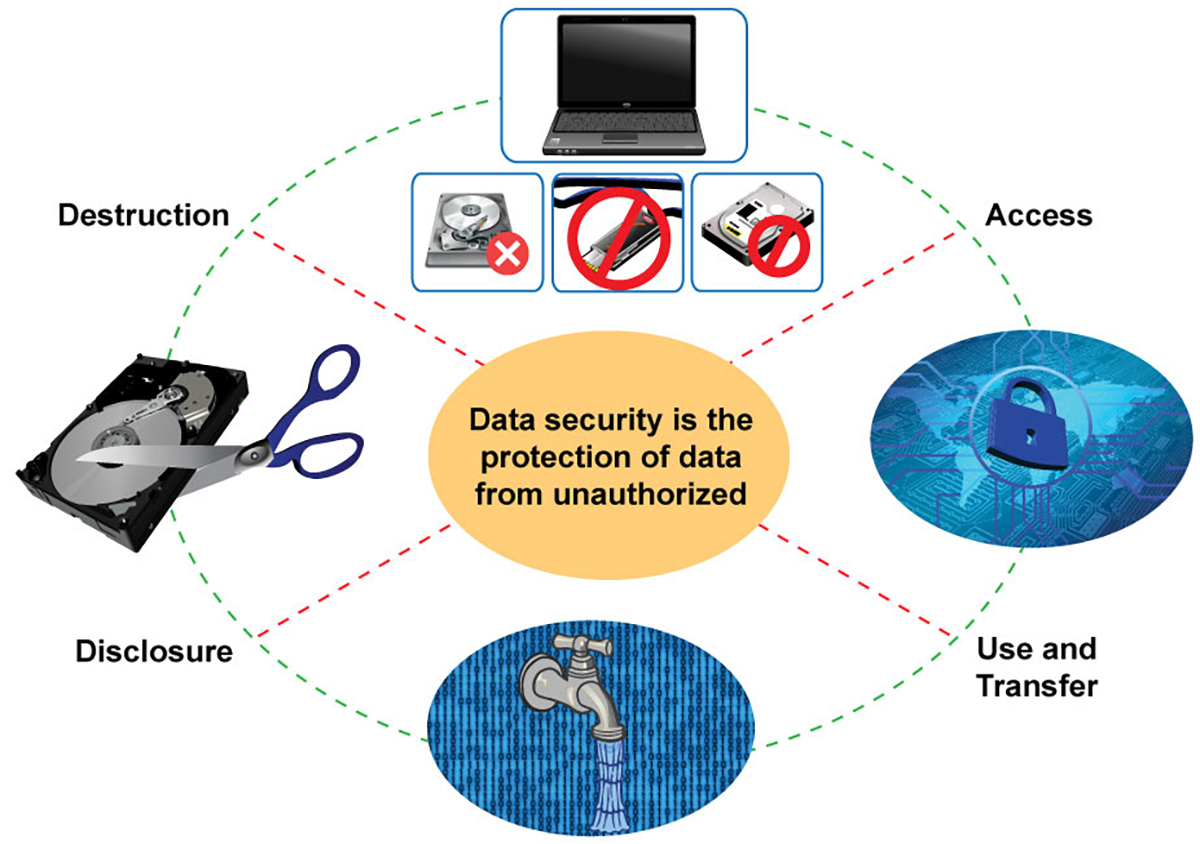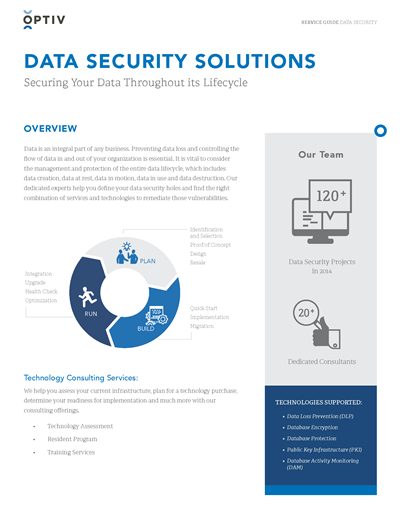Data Destruction Solutions: A Key Element in Your Cyber Security Technique
Data Destruction Solutions: A Key Element in Your Cyber Security Technique
Blog Article
Checking Out the Relevance of Information Destruction in the Context of Computer System Security Services and Protecting Confidential Data
In an era where data violations are increasingly typical, the value of efficient information destruction can not be overemphasized. Organizations must take on rigorous procedures to make sure that sensitive info is not just shielded during its lifecycle however also emphatically removed when no more needed. The approaches utilized for information obliteration, paired with conformity to lawful requirements, play a critical duty in preserving confidentiality and trust. Nonetheless, the ramifications of these practices expand beyond plain conformity, influencing a firm's online reputation and functional honesty in the digital market. What approaches can organizations apply to enhance their information destruction procedures?
Recognizing Data Destruction
Information damage is an important element of computer protection that involves the long-term removal of data from storage tools to avoid unapproved accessibility and potential data breaches. In a progressively electronic landscape, companies face heightened dangers related to delicate details being improperly accessed or exploited. Reliable information destruction safeguards versus these risks, guaranteeing that private dataâEUR" such as customer info, copyright, and economic recordsâEUR" can not be recouped after disposal.
Recognizing the significance of data destruction expands past simple compliance with regulatory and legal structures; it is necessary for keeping organizational stability and count on. When information is poorly managed or improperly destroyed, the repercussions can be extreme, including monetary loss, reputational damages, and legal responsibilities.

Approaches of Information Eradication

One widespread method is data cleaning, which entails overwriting existing data with random patterns multiple times. This method renders the initial data irretrievable, making it a prominent selection for companies looking for to safeguard private details.
Another technique is degaussing, which makes use of an effective magnetic field to interfere with the magnetic domain names on storage tools, efficiently getting rid of the information. This strategy is specifically effective for magnetic media however is not applicable to solid-state drives.
Physical damage is an additional durable method, crushing or involving the shredding of storage space devices. This technique warranties that information healing is basically difficult, making it perfect for highly delicate information.
Finally, security can offer as a complementary method to data elimination. By securing information before removal, organizations can include an extra layer of safety, making sure that even if remnants are recouped, they stay inaccessible without the decryption key. Each approach must be selected based on the degree of information sensitivity and the particular protection needs of the company.
Legal Conformity and Information Protection
Organizations must browse an intricate landscape of legal requirements connected to data security, specifically after carrying out methods of data eradication. Various regulations, such as the General Data Protection Guideline (GDPR) and the Wellness Insurance Coverage Mobility and Responsibility Act (HIPAA), impose strict guidelines on how organizations have to handle and get rid of of sensitive data. Failing to follow these guidelines can lead to significant lawful effects, consisting of considerable penalties and reputational damages.
Data damage procedures should be diligently documented to demonstrate conformity with relevant laws and requirements. This documents not only functions as evidence of adherence to legal commitments yet likewise shows a commitment to guarding sensitive details. Organizations ought to also develop clear policies pertaining to data retention and devastation timelines, making certain that data is not held longer than required.

In addition, regular audits and assessments of information devastation techniques are essential to maintain conformity and adjust to progressing lawful frameworks (data destruction). By proactively dealing with lawful demands, organizations can mitigate threats linked with data breaches and show their dedication to data security. Inevitably, focusing on legal compliance in information damage processes is not simply a governing commitment, yet a basic facet of a robust information protection strategy
Effect On Business Reputation
The credibility of a business can be considerably impacted by its strategy to information destruction and administration. In today's digital landscape, where data violations can take place anytime, the failure to correctly throw away delicate details can bring about serious consequences. Organizations that improperly take care of data destruction threat subjecting confidential customer info, which not only breaks personal privacy regulations but also wears down count on among stakeholders and clients.
A tarnished online reputation can cause reduced consumer commitment, as clients end up being reluctant to engage with a business that has actually shown neglect in securing their data. Furthermore, adverse publicity bordering an information violation site link can have a long lasting effect, as possible consumers may be deterred by the regarded absence of protection. This can cause a straight decrease in income and market share.
Furthermore, companies that prioritize information devastation as part of their security technique can boost their reputation by showcasing their commitment to securing delicate details. By embracing Full Article rigorous information monitoring practices, organizations can not only mitigate dangers but also place themselves as credible entities in their particular markets, thereby enhancing their overall brand name picture.

Best Practices for Secure Disposal
Implementing finest techniques for secure disposal of information is essential for mitigating risks related to information violations and making sure conformity with privacy policies. Organizations ought to adopt a detailed data disposal plan that lays out procedures for both digital and physical information devastation.
For physical data storage devices, such as hard disk drives, shredding or degaussing is advised to stop data healing. Furthermore, companies should maintain a chain of safekeeping documentation during the disposal procedure, making sure accountability and traceability of disposed products.
For digital data, making use of software application that complies with market requirements for information cleaning is essential. This software program must overwrite existing information several times, making recuperation virtually impossible. It is additionally vital to verify the efficiency of the information damage procedure with audits or third-party evaluations.
Training employees on secure disposal practices includes an additional layer of safety and security, as human error can commonly lead to data exposure. On a regular basis updating and examining click here now disposal plans makes sure positioning with evolving regulations and technological innovations. By executing these finest techniques, organizations can substantially lower the threat of unauthorized information gain access to and boost their total data security method.
Final Thought
In verdict, data devastation is an essential element of computer safety solutions that guarantees the protection of confidential info from unauthorized gain access to. Carrying out efficient techniques of data obliteration, adhering to legal conformity, and identifying the effect on organization track record are crucial components of a comprehensive data safety and security method. By taking on best methods for safe and secure disposal, organizations can foster depend on with clients and guard sensitive data, eventually contributing to a more safe electronic landscape.
In an age where information breaches are increasingly typical, the value of efficient data destruction can not be overstated.Data devastation is a vital element of computer safety that entails the permanent elimination of information from storage space devices to prevent unapproved gain access to and possible information breaches. Organizations ought to also develop clear plans concerning data retention and damage timelines, ensuring that data is not held longer than necessary.
By proactively resolving lawful requirements, organizations can reduce dangers connected with data violations and show their dedication to data safety (data destruction). Ultimately, prioritizing legal compliance in information damage procedures is not just a regulatory obligation, but an essential facet of a durable information protection approach
Report this page